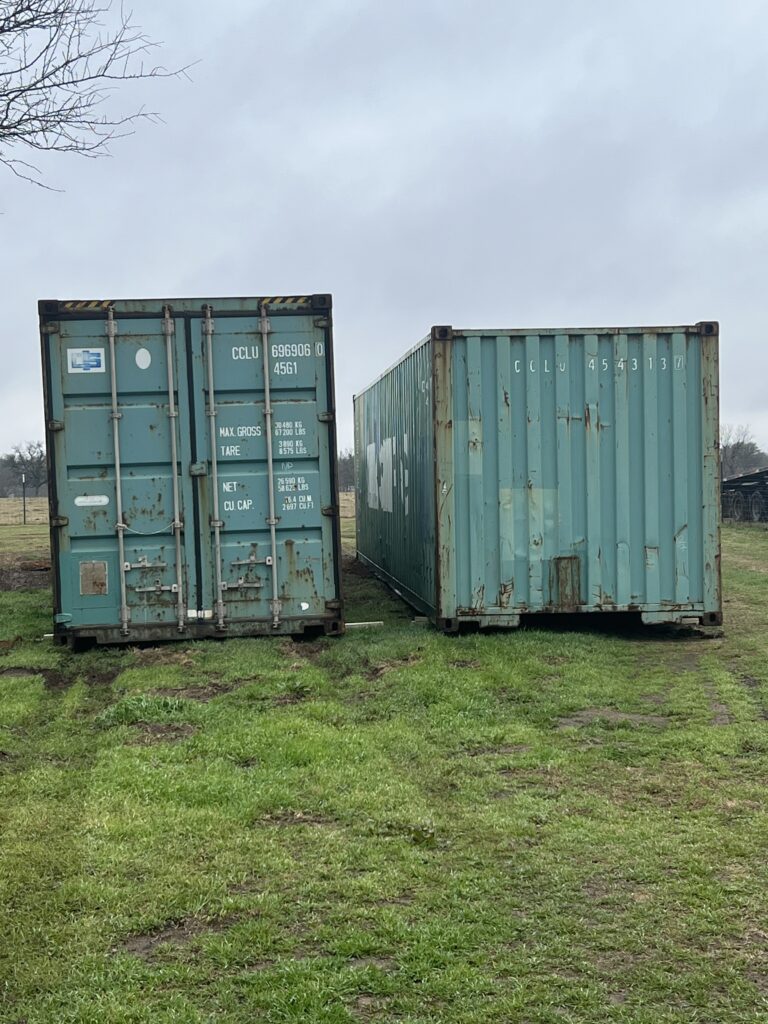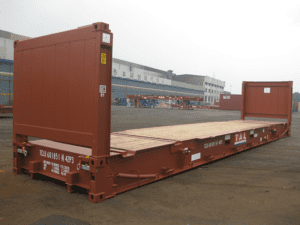Shipping containers are the backbone of global trade and transportation, offering versatile solutions for storage and shipment of goods. Choosing the right container size is essential to meet your specific storage and transportation requirements. In this comprehensive guide, we’ll explore the different shipping container dimensions, their uses, and how to select the perfect fit for your needs. At K3 Containers and Transport, we offer a wide range of used containers to cater to all your storage and transportation needs.
Understanding Shipping Container Dimensions
The Three Main Sizes of Shipping Containers
- 20ft Shipping Container Dimensions
A standard 20ft container measures 20 feet in length, 8 feet in width, and 8.5 feet in height, with an internal volume of 1,169 cubic feet. These containers are the most popular size due to their versatility and ease of handling. They’re suitable for transporting smaller cargos and are perfect for personal or small business storage. Additionally, 20ft containers can be used for various DIY projects, such as creating a backyard office, a tiny home, or a pop-up shop.
- 40ft Shipping Container Dimensions
The 40ft container is twice the length of a 20ft container, providing double the storage capacity at 2,385 cubic feet. It is also 8 feet wide and 8.5 feet high. These containers are ideal for transporting larger cargos and are commonly used for international shipping, commercial storage, and construction site storage. With their increased size, 40ft containers can also be utilized for more extensive DIY projects, such as building a spacious container home, a workshop, or even a swimming pool.
- High Cube Container Dimensions
High cube containers are available in both 20ft and 40ft sizes, with the primary difference being their increased height. A 40ft high cube container measures 40 feet in length, 8 feet in width, and 9.5 feet in height, while a 20ft high cube container has similar dimensions but a shorter length. High cube containers offer additional storage space, making them ideal for transporting or storing items with greater height requirements. The extra height provided by high cube containers allows for more creative DIY projects, such as constructing a two-story container home, an art studio with high ceilings, or a storage space with custom shelving units.
Choosing the Right Shipping Container
Key Factors to Consider When Selecting a Shipping Container
- Assess Your Storage and Transportation Needs
Before selecting a shipping container, it’s crucial to evaluate the specific requirements of your storage or transportation project. Take the following factors into consideration:
- Type of Cargo or Items to be Stored
- Duration of Storage or Transport
- Frequency of Container Use
- Space Constraints
- Consider Weight Capacity and Space Requirements
Each container type has different weight capacities and space requirements. Evaluate the weight and dimensions of your cargo to ensure it fits comfortably within the container. In addition, consider the following:
- Maximum Gross Weight: This is the maximum weight a container can carry, including the weight of the container itself. Ensure that your cargo does not exceed this limit.
- Tare Weight: The weight of the empty container. Be mindful of this when calculating the total weight of your shipment.
- Payload Capacity: The maximum weight of cargo that can be loaded into the container, excluding the tare weight. Make sure your cargo’s weight is within this limit.
- Container Grades and Quality
Used shipping containers are typically graded based on their condition, which can impact their price and suitability for specific purposes. Familiarize yourself with common container grades:
- One Trip (A-Grade)
- Cargo Worthy (B-Grade)
- Wind and Watertight (C-Grade)
- As-Is (D-Grade)
Each grade has different characteristics that may affect its functionality, appearance, and cost. Choose a grade that aligns with your intended use and budget.
- Container Modifications and Customizations
Depending on your needs, you may want to consider modifications or customizations to your shipping container. Some common modifications include:
- Adding windows and doors for natural light and accessibility
- Installing insulation to regulate temperature and reduce condensation
- Incorporating ventilation systems for improved air circulation
- Installing electrical and plumbing systems for convenience and functionality
- Adding shelving, partitions, or other interior modifications to optimize storage or living spaces
Keep in mind that customizations can impact the cost and lead time for your container. Plan accordingly to ensure your project stays within budget and is completed on time.
- Evaluate the Container’s Condition
When purchasing a used container, inspect its condition to ensure it meets your requirements in terms of durability, structural integrity, and weather resistance. It’s important to choose a container grade that aligns with your intended use and budget.
Choosing the right shipping container size is crucial for optimizing your storage and transportation needs. By understanding the various container dimensions and considering the factors mentioned in this guide, you can make an informed decision to select the perfect fit for your requirements. Whether you need a container for storage, transportation, or a DIY project, K3




